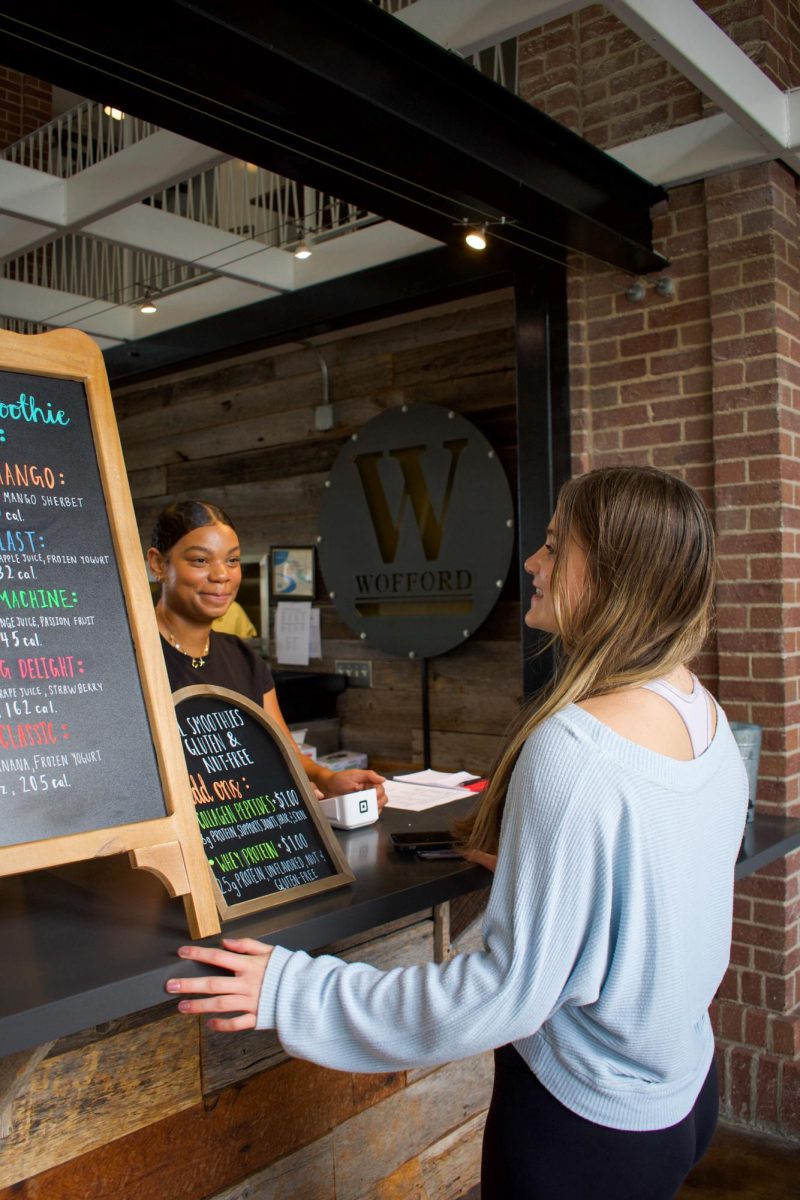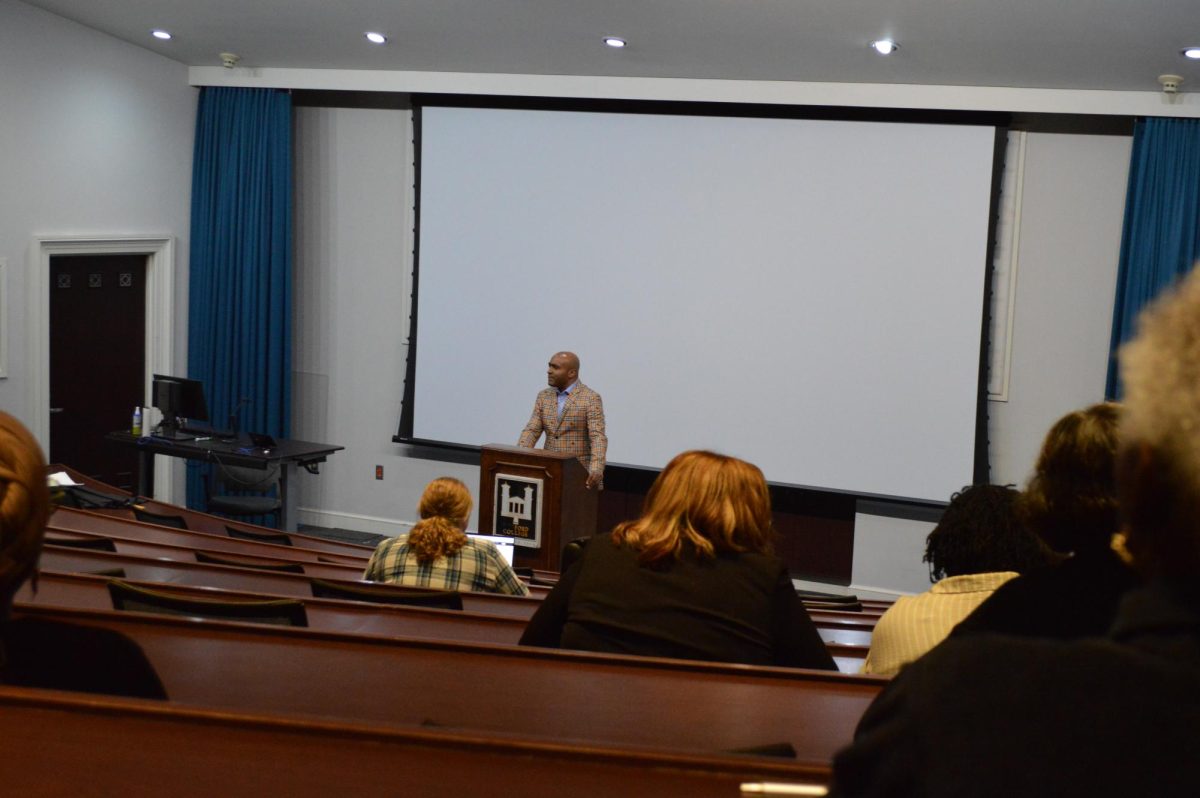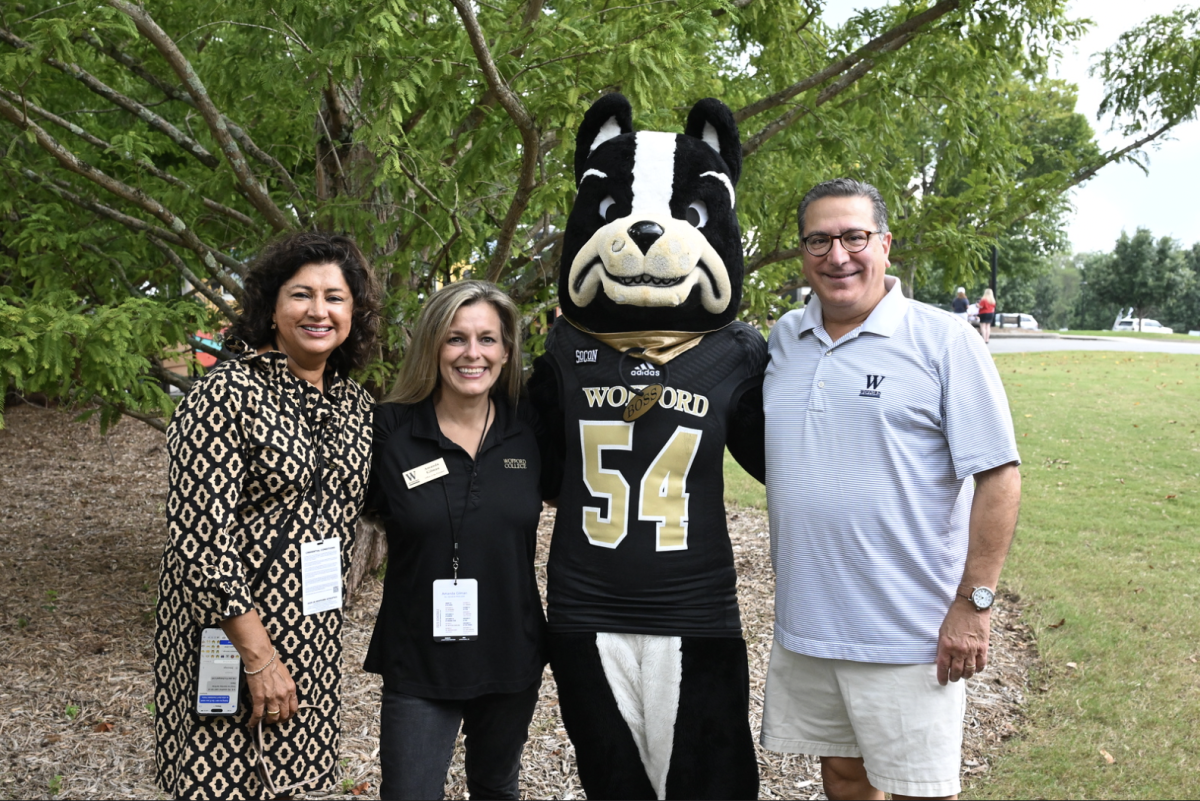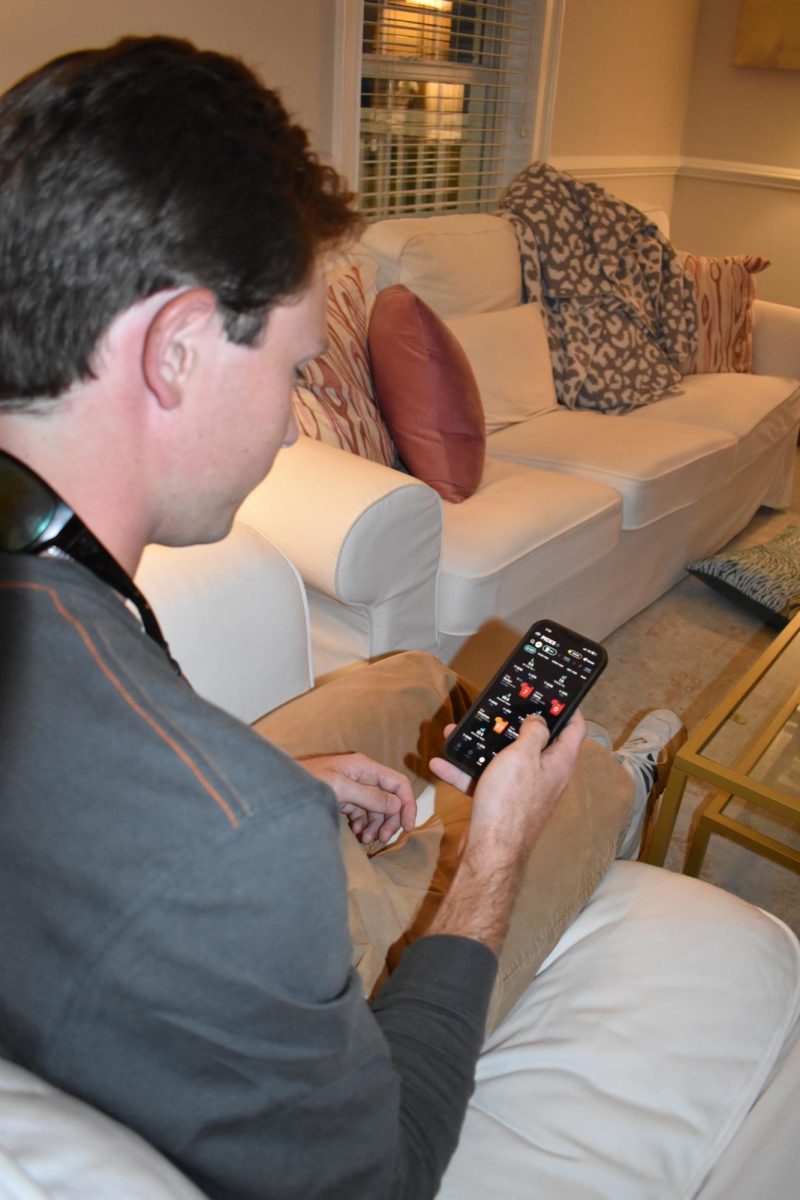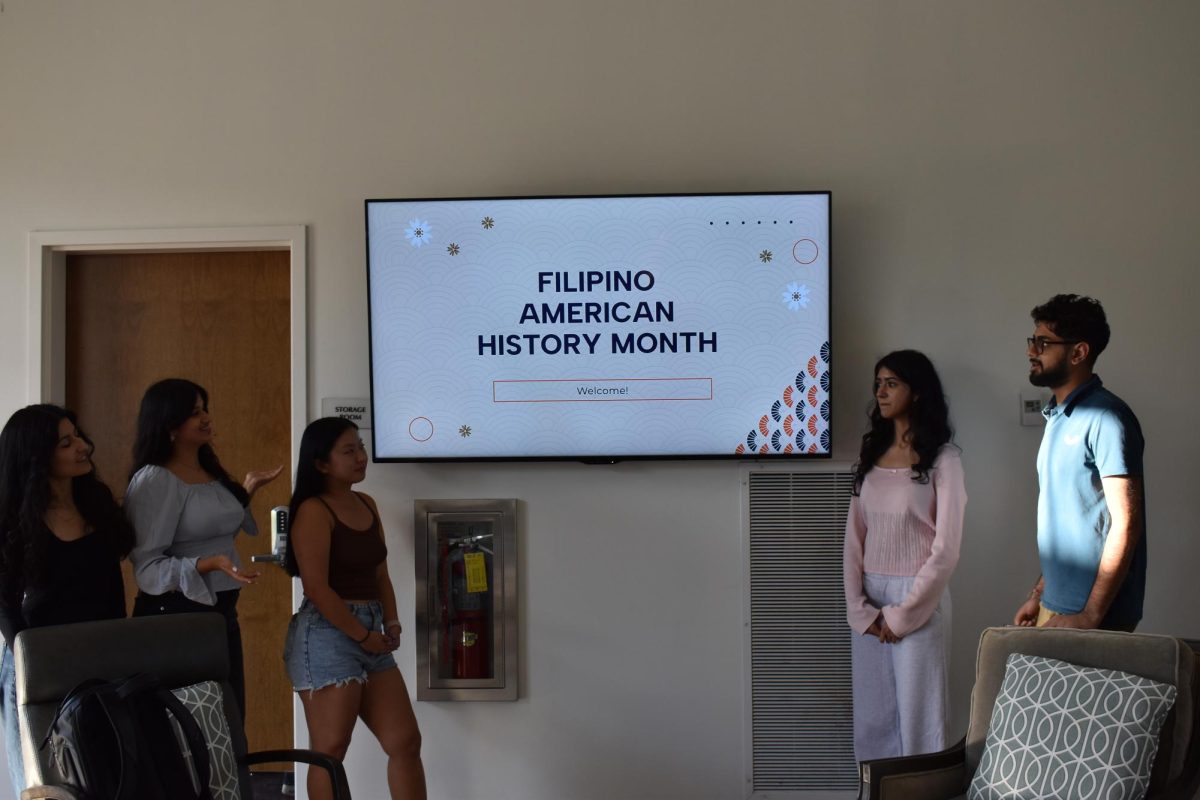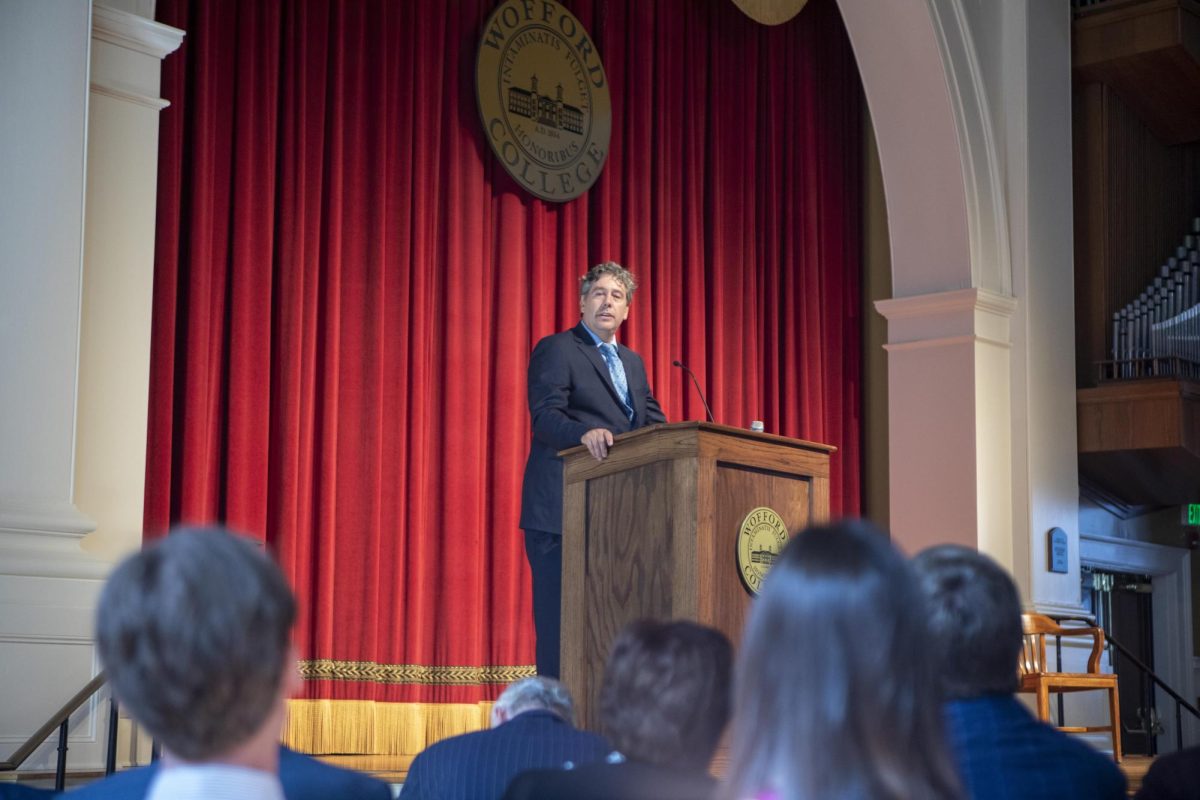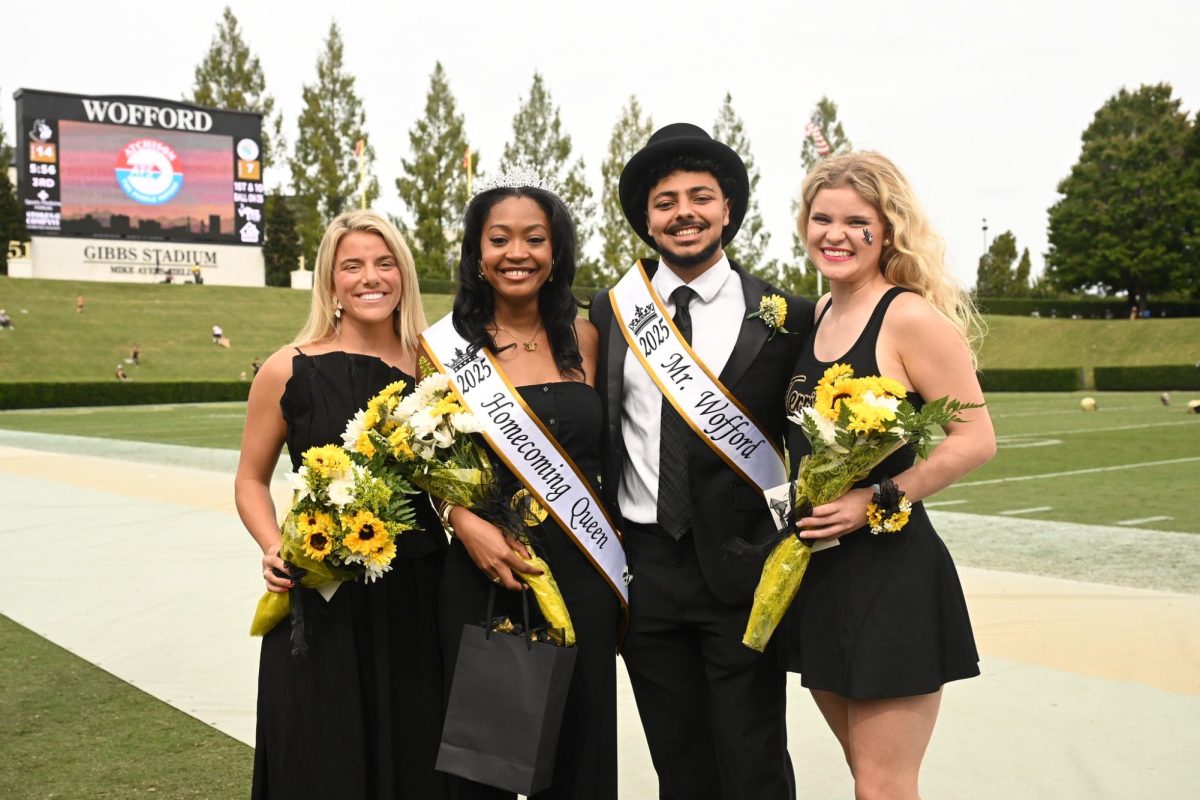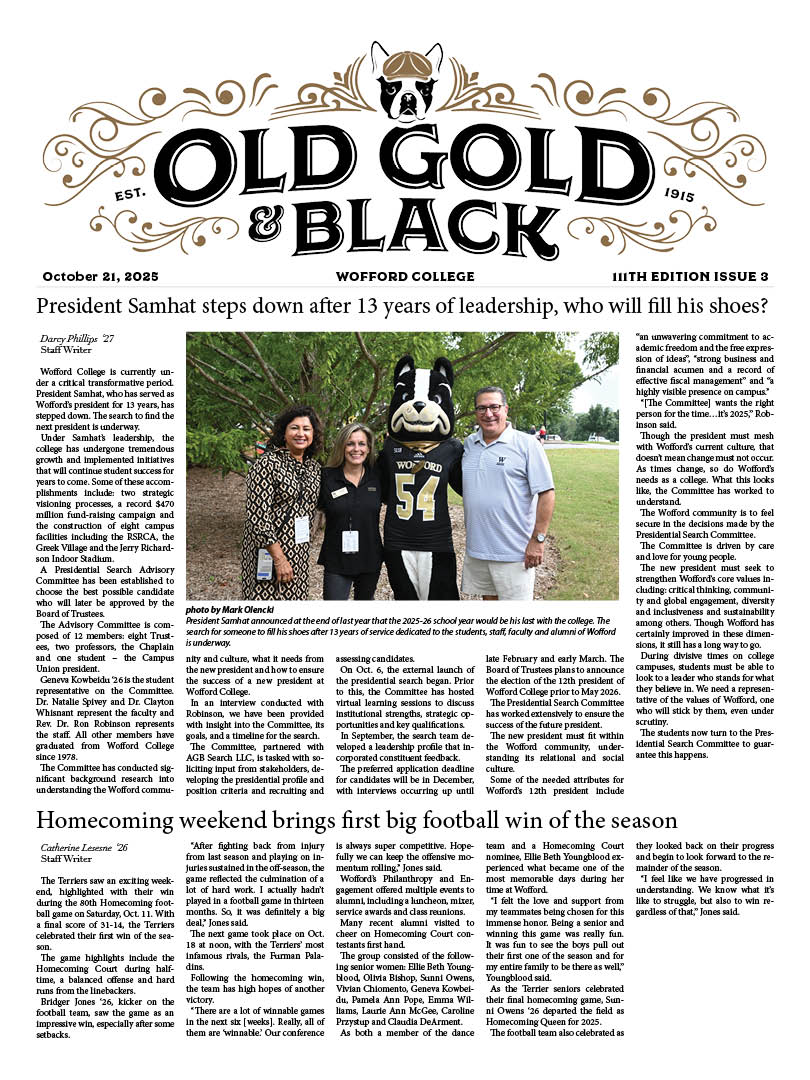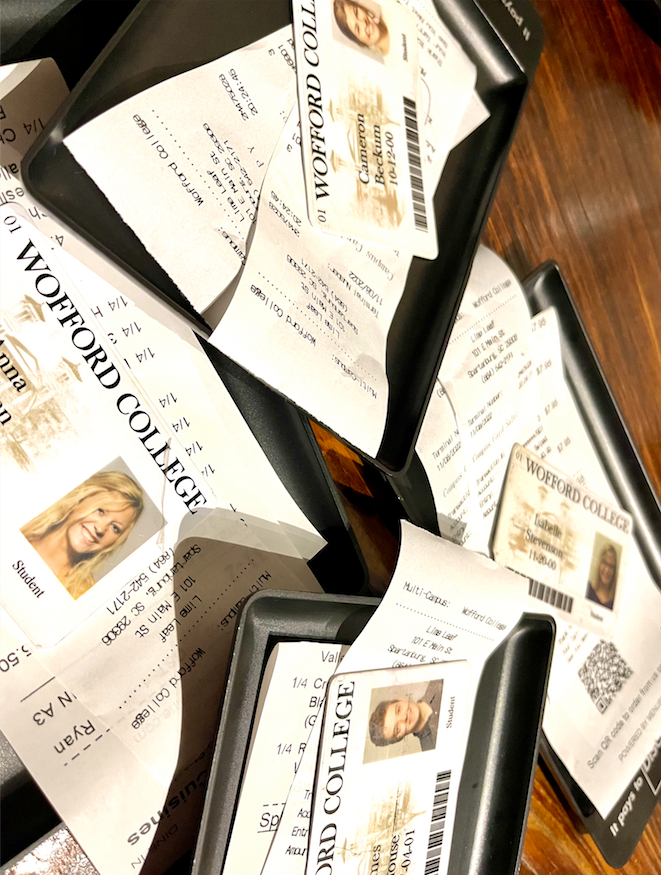By: Sarah Madden, Senior Writer
A recent family trip to Spain simply had to include running with the bulls in Pamplona, says Dr. Deno Trakas, professor of literature.
“I’m not by nature a reckless person or a daredevil — I don’t have any death wish — but I was curious, mostly, about what it’s like to be in Pamplona during the festival of San Fermín. If you’re going to be there between July 6 and 14, you might as well (run). I wanted to have the experience and then write about it.”
According to Trakas, however, curiosity is just one of the reasons he ended up running a half-mile route with wild bulls, escorting them through the city and partaking in a historical Spanish tradition.
Trakas and his wife first met in Spain many years ago and lived there for a year.
“We thought it would be a cool place to go for an anniversary trip with the family,” he says.
Additionally, Trakas wanted to visit one of the settings of a novel he’s taught at Wofford for 30 years: “The Sun Also Rises,” a novel by Ernest Hemingway.
“His book made Pamplona famous,” says Trakas. “Hemingway and the bulls.”
Though he watched videos of the festival online and read books to prepare himself, Trakas says that one cannot adequately prepare to run with the bulls for the first time.
“I thought I knew what I was doing. I started about halfway through the route. I didn’t want to beat the bulls to the arena but I didn’t want them to pass me early either so that I’d end up too far behind them. When the bulls came up behind me, I was on a narrow part of the route,which wasn’t a good thing. There are between 1,200 and 4,000 people on this street during the run, and that adds to the danger. When the bulls passed me, they were a threatening force I hadn’t imagined. They seemed massive, and they were running very fast.”
The run, which only takes a few minutes, was held every day at 8 a.m. for all seven days of the festival. Tracks ran the third day — not a weekend day and not the first to avoid crowds.
“There are what I call ‘professional’ runners who run all seven days and make it more challenging for themselves…they run ‘on the horns,’ or among the bulls. Since they can’t run ahead the whole route, because the bulls run faster, they pick a spot, and when the bulls are coming they run out in front,” he says. “When the bulls catch up, they run with them, sometimes touching them, as long as they can, and then dart away to the side. “It’s dangerous, but they’re usually good enough to do it safely. Last year, a man named Bill Hillmann was gored while trying to help others. He had actually written a guide to running with the bulls!”
According to Trakas, the outfit he wore for the run is the traditional garb: men wear white pants and shirts, red sashes and red neckties as their costumes. The women wear white also. Trakas estimates that 95 percent of people in the city wear this outfit, running or not.
“There must be some symbolic significance, but I’m not sure what it is. I’m not sure what the red symbolizes…maybe blood? Most of the people wearing white end up wine-colored, because they end up with wine sprayed all over them.”
Though Trakas says no blood was shed during his bull-running adventure, his family’s trip throughout Spain was filled with other excitements.
“One of the reasons people go to Pamplona is because it’s just a huge party. It’s a Marti Gras-like atmosphere. But another reason they go is to leave all their worries behind. And they truly do — all the people there have this spirit about them — they are friendly and want to talk to you, drink with you, sing and dance with you.”
Experiencing Spain with his family was special for other reasons, says Trakas.
“A bit before the trip, my son and his wife — newlyweds — called us one night and she said, ‘I’m excited about going to Spain and I’ve been practicing my Spanish, but I’ve only gotten as far as: estoy embarazada (I’m pregnant).'”
There was another announcement, too. His daughter brought her boyfriend along with the rest of the family, and while they were in Spain, he popped the question. “The trip was really special for those reasons.”
Trakas and his family spent two and a half days in Pamplona and traveled throughout the rest of Spain, but Pamplona was the main destination.
Trakas’ curiosity about the San Fermín experience is satisfied, he says. “[Running with the bulls] was exciting. Once was enough.”

